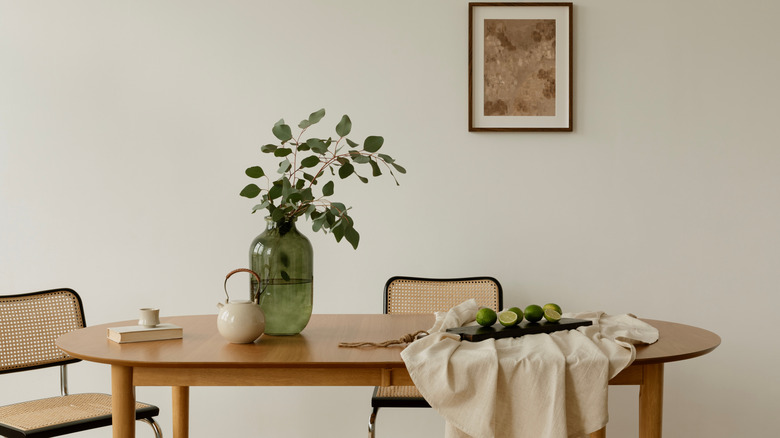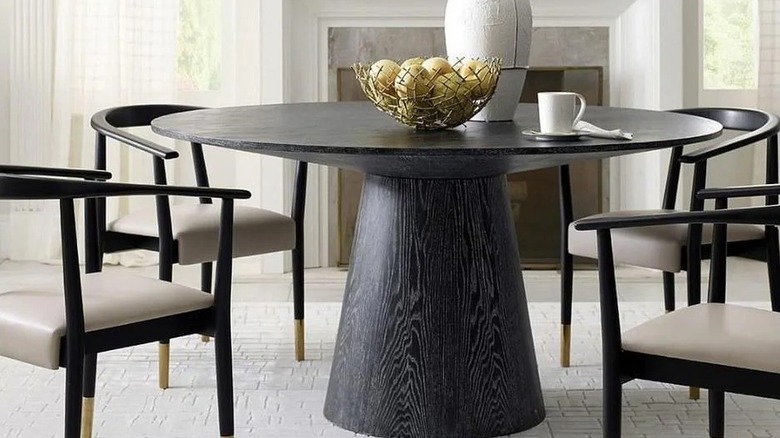The Gentle Wood Trend That Will Dominate Dining Rooms In 2026
It seems that 2025 was truly the year of the dark wood renaissance. The pale Scandi birch and ash woods of the 2010s took a step back to welcome the deep, nostalgic warmth of mahogany and ebony as everyone looked for stylish ways to give home decor a moody makeover. As the new year approaches, however, there's a trend emerging that feels like a middle ground between the two. Cerused wood, the muted wood treatment that highlights the organic grain pattern, is taking over in 2026, particularly in the dining room.
Speaking to The Spruce, designer Melissa Roberts explained that cerused wood, also known as limewashed wood, "leans into a more 'lived-in' aesthetic, but doesn't compromise on style." For Roberts, this wood finish is both refined and casual and looks great paired with oiled wood and hand-forged iron decor. The technique for creating this contrasting textured look has been around for centuries, enjoying particular popularity during the Art Deco movement and, later, the 1950s. Over the last few years, it has been frequently popping up in trend forecasts. Now, it looks like it is here to stay as a key addition to make a statement with your dining room.
Cerused wood is memorable, versatile, and elegant
Cerused wood is one of the dining table trends that are set to make a huge impact. This rich wood finish, which looks particularly striking in open-grained woods like oak and ash, heightens the contrast between wood grain and wood stain to give furniture extra texture and depth. It's also incredibly versatile, since you can pair virtually any base stain with any grain color. To achieve the cerused look, carpenters push a wire brush with the grain to open it up, stain the wood in the chosen tone, and go in again with a different stain that settles in the grain but wipes cleanly away from the raised areas, thus creating the two-toned look. Pairing a dark base stain with a lighter grain stain will bring contrast and sophistication, while choosing a lighter base stain with a white grain stain will give the wood a calming, more rustic appearance. You'll even find cerused pieces in non-wood tones, like blue, pink, and green. Typically, the second, lighter stain mutes the darker color of the first stain, giving it the soft, weathered appearance that designers love.
As a result, cerused wood fits into a wide range of dining room design styles, from the boldest to the most understated and from the most modern to the most traditional. In fact, this treatment was first introduced in 16th-century Europe as a way to protect wood against rot and aging. Back then, they used a lead paste that was first employed as skin-bleaching make-up before it was deemed too toxic for cosmetic uses. You can't get more historical than that, yet cerused wood is coming back into fashion, a pleasant fit for the modern demands for chic nature-inspired dining room designs.

